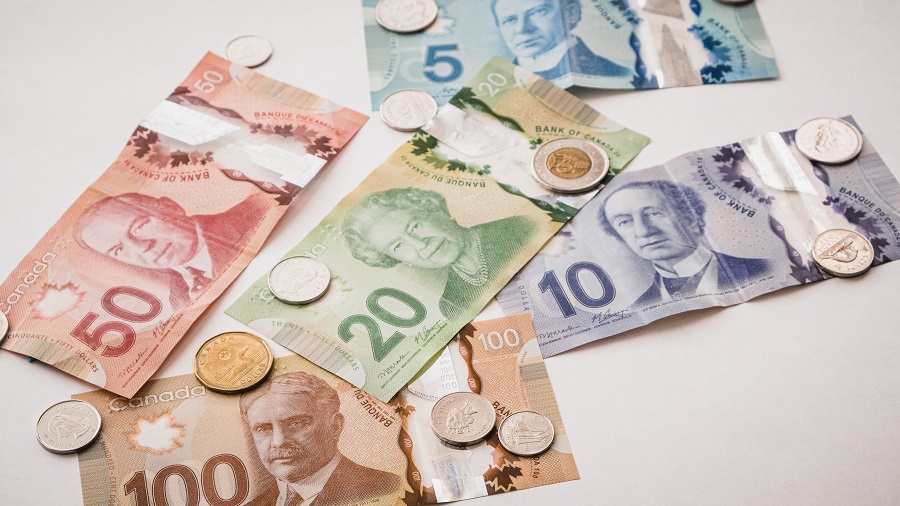
Amidst an environment of high inflation and rising interest rates, the once-dominant position of cash as a secure investment is diminishing as its value fails to keep pace with rising prices. Investors are increasingly looking for alternatives that can mitigate the bite of inflation and increase the value of their investments while containing risk.
So what are the best options for preserving and growing cash in the current economic climate?
Where to Park Cash Right Now?
Where you put your cash depends on what you want to do with it. Those sitting on cash in their bank accounts (and planning on deploying it for a major purchase such as a home) may want to be very selective as to what cash equivalents they hold, says Michael Zagari, Associate Portfolio Manager with Mandeville Private Client Inc and Zagari + Simpson.
“The focus should be matching your financial goals with the appropriate time horizon rather than simply on the higher rate option,” he says.
Liquidity, or easy access to cash, is just as important as interest earned. Parking cash in a checking account that earns 1% interest maybe more suitable “if you’re buying a home in four months,” he says.
On the other hand, many Canadian lenders are offering 4% interest for six-month GICs, four times that of a checking account, but require locking-in of funds through the maturity date.
“If you have a well-defined timeline on when you need that cash and you don’t wish to take on any risk at all, a GIC might also be a good option as it offers a consistent return over a defined period of time,” says Ian Tam, investment specialist at Morningstar Canada.
If your goal is to retire in 15 years, holding cash or cash equivalents may not help you reach your retirement goals. “Defining your financial objective, time horizon and liquidity needs are key to preserving and growing your cash,” asserts Zagari.
High-Yielding Options with Low Risk
In the current environment of stubborn inflation and rising interest rates, high interesting savings accounts, or HISA, have become more relevant. Investors have many HISA options to consider where they can achieve liquidity and attractive interest rates for little to no fees.
There are many high interest savings accounts and ETFs that offer investors liquidity, convenience and lower risk relative to stocks and mutual funds. There is also a less liquid option in GICs. The key difference among these instruments is that with GICs and savings account, your principal is secured and there are no trading commissions.
Examples of these products include the Purpose High Interest Savings Account, the Renaissance High Interest Savings Account and the B2B Bank High Interest savings account.
“In some cases, investors who hold their accounts on brokerage platforms may not even need to buy these products since their cash balances are being rewarded with interest already,” says Zagari, stressing the need to “check in with your provider to see how the platform treats cash on the sidelines.”
Money Market ETFs
For those who need the cash immediately, or are saving to build an emergency fund, there are a wide swathe of money market ETFs available which take on minimal risk, says Tam.
Money market ETFs are investment vehicles that provide investors with exposure to money market instruments. Money market instruments are short-term, low-risk debt securities, such as Treasury bills, commercial paper, and certificates of deposit, that are highly liquid and generally mature within one year.
“These instruments are known to be less sensitive to market conditions than stocks, but they still face interest rate risk,” says Tam. “Money market funds have the least amount of interest rate risk amongst fixed-income funds.”
Investors also have another attractive option in high interest rate savings account ETFs. HISA ETFs provide investors the opportunity to participate in the interest rates offered by these accounts, which are typically higher than the rates offered by traditional savings accounts.
Though not entirely risk free, “generally speaking these instruments take on very little risk,” says Tam, but cautions, it may take a day or so to get this cash by selling the investment.
Given current interest rate conditions these instruments are certainly worth another look, he adds.
Investors should absolutely consider ETFs when selecting a money-market fund since ETFs typically are more tax and cost efficient than mutual funds, says Bryan Armour, director of passive strategies research for North America at Morningstar
“ETFs often come with lower MERs than typical investor share class mutual funds,” he notes, adding that “investors keep 100% of the fees they don’t pay, so cost should be a top consideration.”
Further, ETFs trade like stocks throughout the day, so investors should look for those with high net assets to ensure adequate liquidity, Armour asserts.
Beware the Risks
Investors should be careful not to invest in anything that has the potential to change value quickly or doesn’t allow you to withdraw money in the timeframe you require.
Considering the impact of the variability of interest rate is imperative. “With interest rates as high as 5%, there are far less incentives to go into the stock and bond market and try to recreate or achieve a slightly higher interest rate,” contends Zagari.
“Investors who parked their cash into multi-sector bond mutual funds that hold a low to medium risk rating would have experienced an unrealized capital loss of approximately 14% in 2022.”
That is because when interest rate started to climb, the value of existing bonds in the fund decreased, leading to a decline in the fund's overall value.
For that reason, those who stepped outside money market funds, would have lost significant money last year, compared to a “simple and boring high interest savings account where the capital is guaranteed,” Zagari says.
Investors should also be careful with products that come with a maturity date “because matching your liquidity needs that can change without warning is difficult to connect with a fixed, nonnegotiable GIC maturity date,” he adds.
There is no such thing as risk-free investment options “outside money markets and high interest savings options,” says Zagari.
There are always trade offs for investors to consider when trying to craft the perfect cash holdings structure.






:quality(80)/cloudfront-us-east-1.images.arcpublishing.com/morningstar/KWYKRGOPCBCE3PJQ5D4VRUVZNM.jpg)













